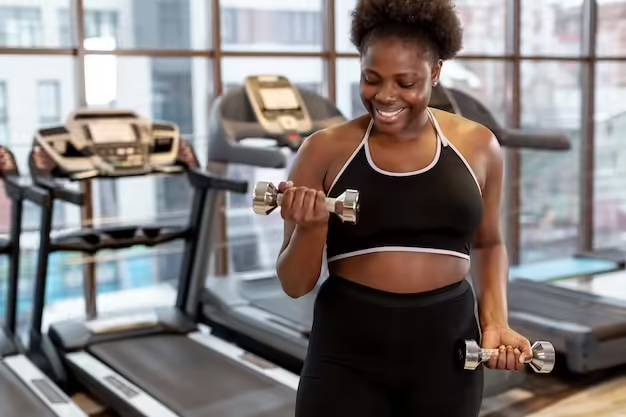Wearing snug gym clothes can be beneficial, providing support for muscles, reducing vibrations, and safeguarding against injuries and scrapes. Nevertheless, wearing such attire comes with both advantages and disadvantages, largely influenced by the materials they are made of and how they interact with the body during physical exertion.
Materials like Spandex, nylon, and polyester, which are commonly used in gym wear, are often derived from oil and can harbor harmful chemicals like phthalates and bisphenols. Research conducted at the University of Birmingham has shown that sweat can extract these chemicals from the synthetic fibers, potentially increasing their absorption into the skin, leading to possible health complications. Moreover, the oil in sweat aids in the dispersion of these chemicals, heightening the risks of adverse effects on the body. Here are the potential drawbacks of wearing tight gym clothes while working out.
Breast Cancer
Prolonged use of tight sports bras has been associated with a heightened risk of breast cancer, although it is essential to note that correlation does not necessarily mean causation. It is advisable to wear properly fitting bras to prevent discomfort and mitigate any potential health concerns.
Asthma
Asthma is a chronic condition that affects the airways in the lungs. Tight gym wear made with certain materials like synthetic or certain chemicals can release chemicals like BPA, phthalates, and bisphenols, which can be absorbed through the skin during exercise. Another possible occurrence is that it can irritate the skin and cause numbness, which can be uncomfortable and distracting during exercise. This discomfort might make it seem harder to breathe.
Heart disease
Because of the chemicals like BPA that can be absorbed through sweat, heart disease can be triggered. Very tight clothing that restricts blood flow could be uncomfortable and potentially risky, especially for people with pre-existing circulatory problems.
Infections
Another concern is the growth of bacteria and fungi in tight, sweaty gym wear. Tight clothing that does not breathe well can hold moisture in areas prone to fungal infections, such as the groin area, leading to conditions like jock itch and ringworm. These infections can cause discomfort and, in some cases, be transmitted to others. Similarly, the warm, moist environment created by sweaty workout gear can facilitate the growth of Staphylococcus bacteria, which can lead to serious infections, including potentially life-threatening ones.
Obesity
Obesity is a complex condition influenced by multiple factors, including diet, physical activity, genetics, and lifestyle. Wearing tight gym wear while exercising is just one aspect of a broader set of factors. Tight gym wear, particularly sports bras and athletic wear, can contain high levels of BPA, a chemical linked to obesity. When you sweat, the oil in your perspiration can pull harmful chemicals out of the plastic in your clothes, making them more likely to be absorbed through the skin. This means that the more you sweat, the more chemicals you could potentially absorb. Nevertheless, the relationship between BPA and obesity is still being researched, and more studies are needed to establish a direct causal link.
Other conditions
Wearing tight gym wear for extended periods can lead to other health issues. For instance, wearing overly tight compression bras can result in chest ulcers, especially for individuals with larger bust sizes. This is due to the constant pressure and friction against the skin, leading to damage and open sores. Furthermore, forgetting to change out of sweaty workout gear can contribute to conditions like athlete’s foot, which thrives in the warm, moist environment created by damp socks and shoes.
What you should do


To mitigate the risk of exposure to these harmful chemicals, it is recommended to opt for clothing made from sustainably produced, minimally processed natural textiles such as organic cotton, hemp, or merino wool. When purchasing gym wear, checking for certifications from third-party textile certifiers like GOTS and OEKO-TEX can help ensure that the products are free from toxic chemicals. Additionally, washing new clothing before wearing it can help remove some of the chemicals used in manufacturing. For those already owning synthetic gym wear, minimizing contact with the skin and changing immediately after workouts can reduce exposure
Extra resources
- https://www.ncbi.nlm.nih.gov/pmc/articles/PMC9051004/
- https://www.ncbi.nlm.nih.gov/pmc/articles/PMC4306786/
- https://www.ncbi.nlm.nih.gov/pmc/articles/PMC8949383/
- https://www.healthline.com/health/tight-clothes
Don’t Miss | Can Snoring Increase Stroke Risk In Adults? Here’s What Experts Want You To Know
Frequently Asked Questions (FAQs)
Is exercising in tight gym wear unsafe?
Exercising in tight gym wear can have side effects on the body according to scientists. The constriction caused by tight clothing can restrict blood flow and limit the range of motion, potentially leading to muscle strains and poor circulation.
What are the side effects of wearing tight gym clothes during workouts?
- Restricted blood flow
- Decreased range of motion
- Increased risk of muscle strains
- Impaired circulation
How should I choose the right gym clothes for exercising?
When selecting gym wear, opt for outfits that are comfortable, breathable, and allow for ease of movement. Choose materials that wick away sweat and provide adequate support without constricting blood flow. Consider wearing properly-fitted clothing to prevent any negative side effects during your workouts.






